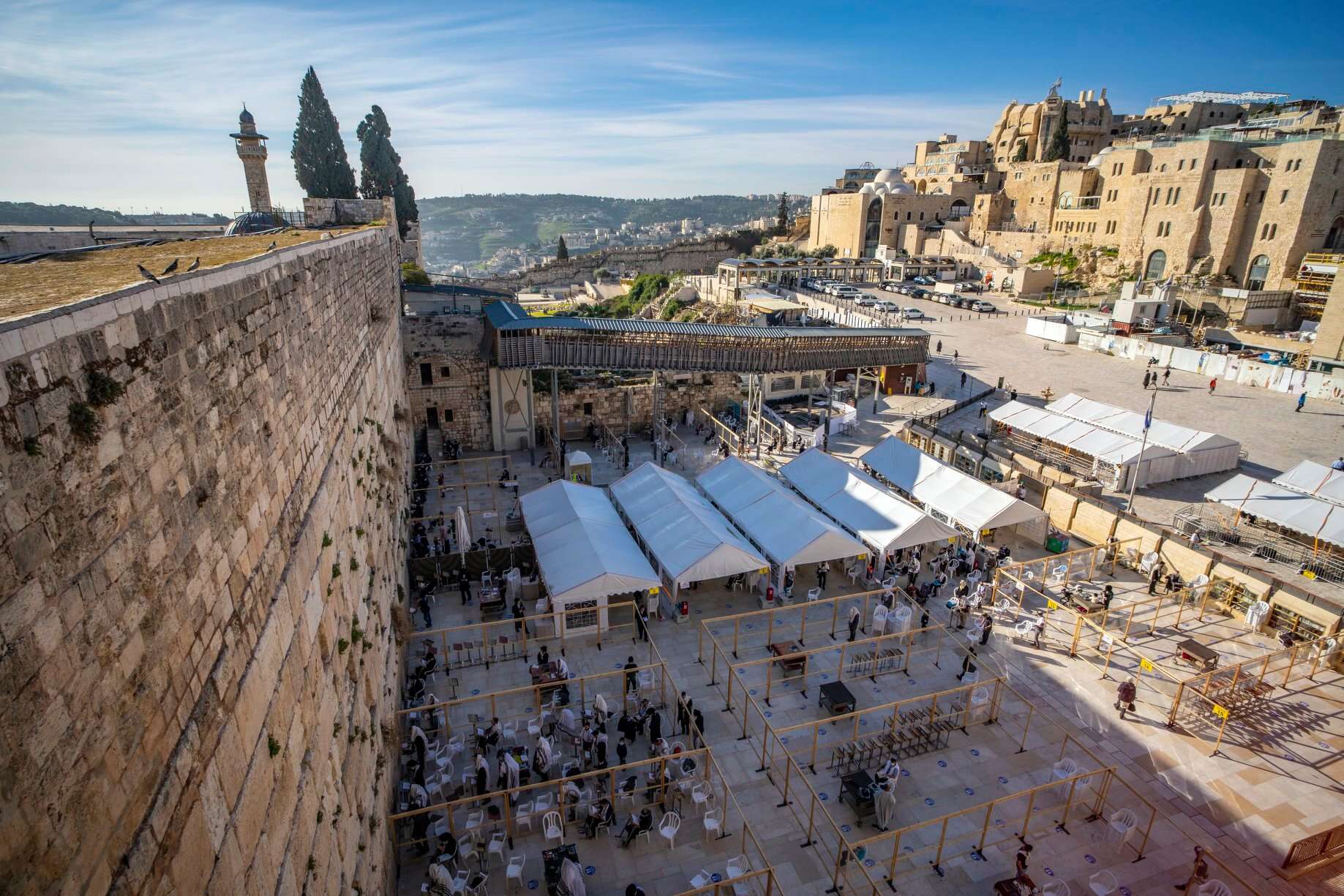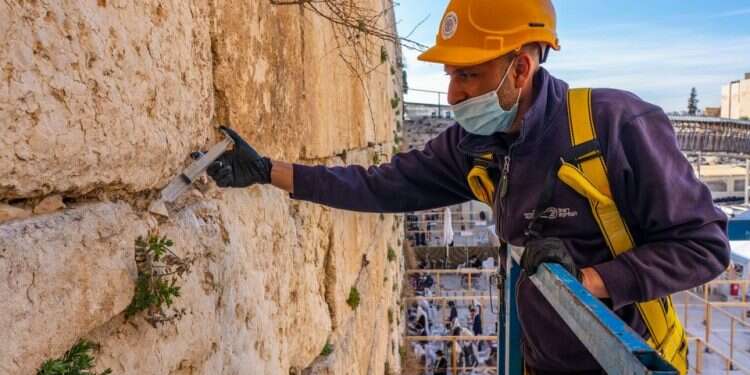While Israel was still under its third national lockdown, experts began administering the pre-Passover conservation "check-up" to the Western Wall, using tools that included syringes.
Follow Israel Hayom on Facebook and Twitter
Twice yearly, before Passover in the spring and the High Holy Days in September/October, Western Wall Heritage Foundation engineers and Israel Antiquities Authority conservators conduct thorough inspections of the 2,000-year-old Western Wall stones at the prayer plaza to ensure the safety of visitors.
The work carried out at the site is subject to religious strictures established by Rabbi of the Western Wall Shmuel Rabinowitz.
"Over 12 million people visit the Western Wall Plaza each year," said director of the Western Wall Heritage Foundation Mordechai Eliav.

"Although this year, in the shadow of COVID-19, people are increasingly 'visiting' the Western Wall remotely, we are already preparing for the return of visitors to the wall. The Western Wall Heritage Foundation is making every endeavor to preserve the wall's ancient stones and their resilience, for the safety of worshipers and visitors," Eliav said.
Yossi Vaknin, head conservator for the Israel Antiquities Authority in the Western Wall area, explained that the wall's ancient stones are subject to "natural weathering."
"Our routine biannual inspections enable us to track the condition of every single stone. We have an 'identity card' for each of the hundreds of stones in the plaza and monitor dozens of features. Our most recent survey revealed that it was necessary to treat the 'peel,' or outer layer, of several stones," he explained.
"Our work on the historic wall is non-destructive," Vaknin said, noting that work does not entail drilling into the stones. Rather, he said, dissolved stone into the gaps and fissures, followed by liquefied limestone-based grout. When it dries, the crack is repaired.
"This is the best possible method of 'healing' the stones and the ultimate defense against weathering for the most important stones in the world," he said.
One of the main factors that causes the weathering of the Temple Mount's walls is the ecosystem that forms an integral part of the Western Wall landscape. Numerous plants have taken root in the cracks between the wall's stones – particularly thorny capers, golden drops, and golden henbanes. Birds also nest in the wall: common swifts, which arrive every year, as well as ravens and doves. The conservation work seeks to preserve this micro-ecosystem.
Part of this article was was first published by i24NEWS.
Subscribe to Israel Hayom's daily newsletter and never miss our top stories!




